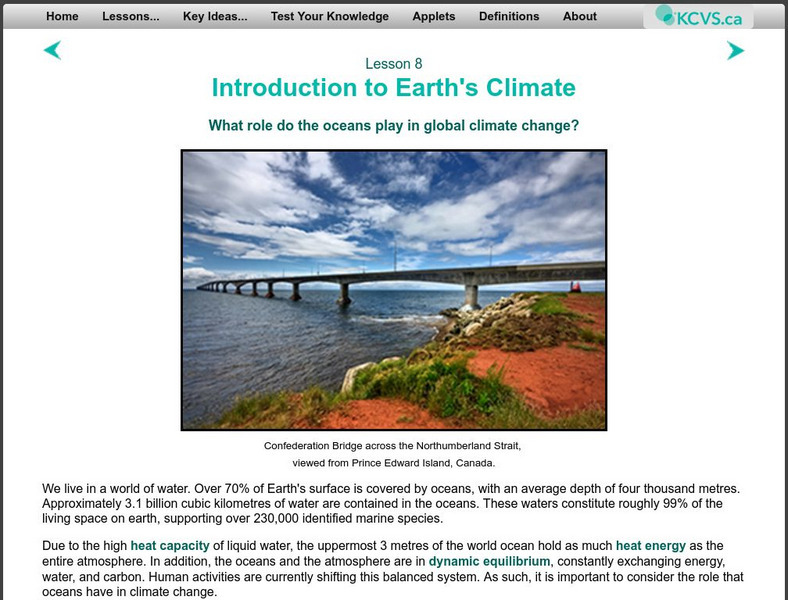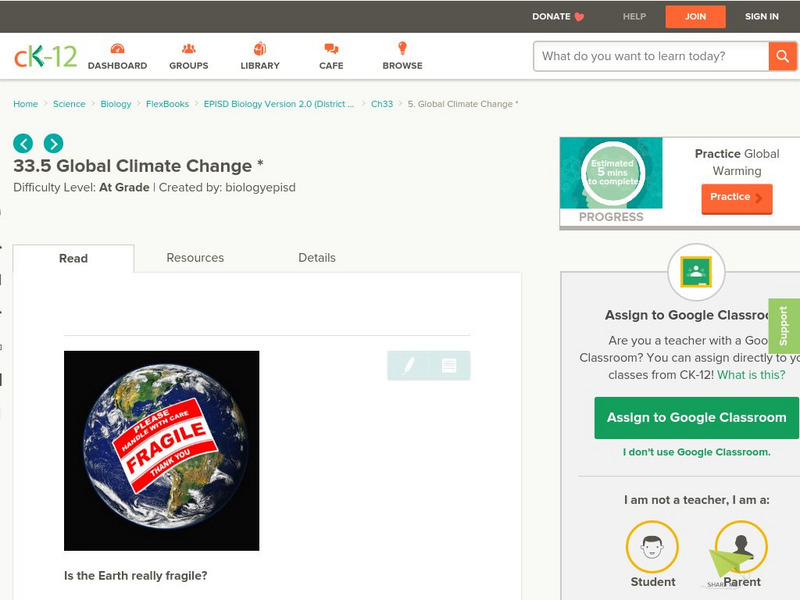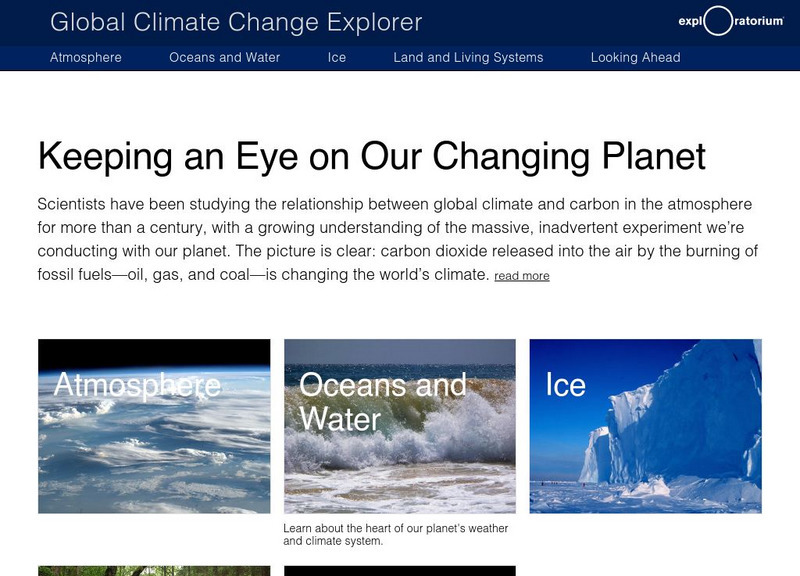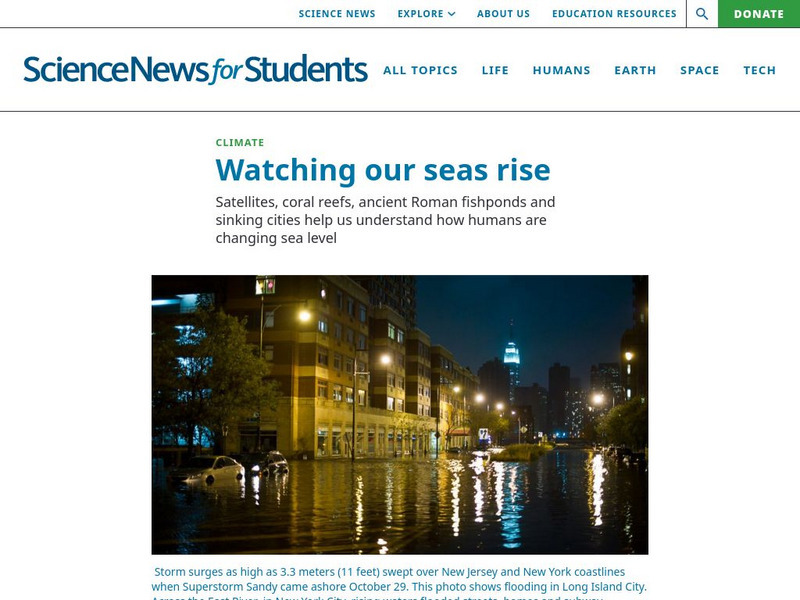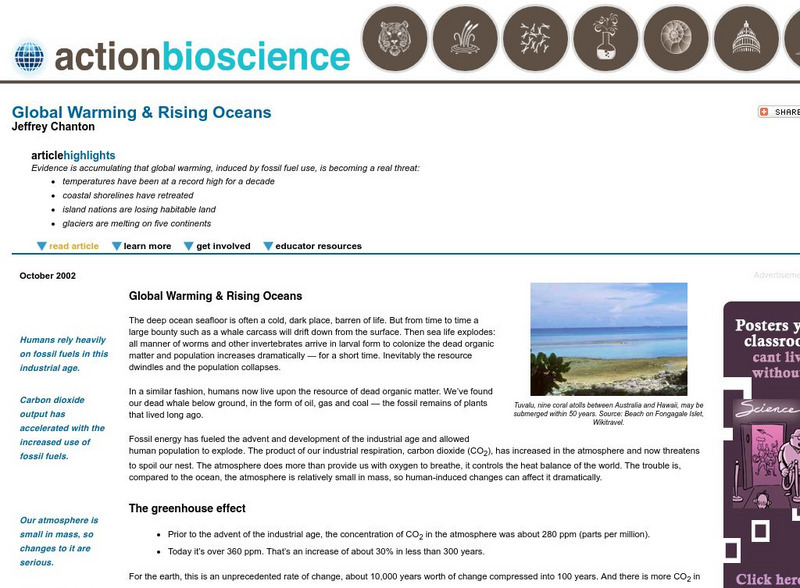Hi, what do you want to do?
Curated OER
Three Clouds Activity
Students understand how clouds are formed. In this cloud lesson, students participate in three experiments to make clouds. Students complete activity sheets for each experiment.
US Geological Survey
The Water Cycle for Schools: Beginner Ages
Explore a day in the life of a water droplet. An interactive infographic helps scholars learn how water cycles work from precipitation all the way around to condensation. Learners hover over each step of the cycle to read more as they...
Curated OER
Wonders of Weather
Students understand the destructive force of a tornado. They learn the role of a thunderstorm in the creation of a tornado.
Curated OER
Three Clouds Activity
Students explore how clouds are produced through three different age-appropriate hands-on experiments.
Curated OER
Atmospheric Cells
Students recognize that the sun is the source of energy driving atmosphere cells. They relate the motion of the atmospheric cells to mantle convection cells. Students recognize that the function of atmospheric cells is to move heat from...
Curated OER
Fallout!
Learners plot the locations of fallout from two disasters that polluted much of the world's air. They plot the ash fallout from the 1980 Mt. St. Helen's eruption to see what the wind patterns in the United States look like overall. Next...
King's Centre for Visualization in Science
Explaining Climate Change: Lesson 8: Climate Change and the Oceans
This is the eighth lesson in a series of learning modules on the topic of climate change. It explores the role that oceans play in global climate change. Includes comprehension questions and interactive tools for understanding the...
Climate Literacy
Clean: Climate Change and the Oceans
Students discover the role that the oceans play in climate change, and how climate change affects the oceans. It is lesson eight in a nine-lesson module "Visualizing and Understanding the Science of Climate Change."
NOAA
Noaa: The Ocean's Role in Weather and Climate
A collection of resources - interactive activities and teacher tutorials - on the impact the ocean has on weather and climate.
Other
New England Aquarium: Climate Change and the Oceans
A series of videos accompanied by student activity sheets explore the impact of climate change on the ocean and the animals that live in and around it: sea turtles, jellies, whales, shore birds, lobsters, and coral.
TED Talks
Ted: Ted Ed: Can Wildlife Adapt to Climate Change?
With rising temperatures and seas, massive droughts, and changing landscapes, successfully adapting to climate change is increasingly important. For humans, this can mean using technology to find solutions. But for some plants and...
CK-12 Foundation
Ck 12: Episd: Global Climate Change
[Free Registration/Login may be required to access all resource tools.] Recognize the harmful contributions of burning fossil fuels on the environment and understand the impact of the acidification of the earth's oceans.
Exploratorium
Exploratorium: Global Climate Change: Research Explorer
Explore scientific data relating to the atmosphere, oceans, areas covered by ice, and living organisms in all these domains. Interpret past and present climate data to predict future climate change and its possible effects.
NASA
Nasa Earth Observatory: Ocean and Climate Fact Sheet
Read about Earth's oceans and the effects that climate have had on the rising temperatures over the past one hundred years. Discover how the Earth's ocean and atmosphere are interlocked so that when one changes, the other is affected.
Science Buddies
Science Buddies: Hurricanes and Climate
The past few years have histories of extremely powerful and dangerous storms. These storms have also increased in frequency. To investigate potential effects of climate on hurricane number and strength, this project will focus on the...
NASA
Jet Propulsion Laboratory: Global Climate Change: Sea Level Viewer
This viewer allows you to see ocean heat storage from space. These images indicate sea surface heights. Learn more about El Nino and La Nina and how they have profound effects on world climate.
Smithsonian Institution
Smithsonian Magazine: Eco Center: The Oceans
Students explore the potential problems and fascinating phenomena of the oceans. Some topics investigated are climate change, nutrient pollution, and fishing. The resource consists of a quiz, slideshows, articles, and video clips.
National Geographic
National Geographic: Sources, Sinks, and Feedbacks
Students will learn about how the Earth's carbon cycle works, as they examine the relationship between levels of carbon dioxide and water vapor in the atmosphere and the temperature of the ocean's surface. Includes online student...
Society for Science and the Public
Science News for Students: Watching Our Seas Rise
Ocean levels are increasing around the world. Find out why this type of climate change has scientists concerned.
NASA
Nasa: Climate Kids: Gallery of Oceans
A collection of images showing Earth's oceans and how they are affected by climate change.
Annenberg Foundation
Annenberg Learner: Planet Earth
A series of seven instructional, hour-long videos presenting Earth-science topics such as plate tectonics, oceans, climate changes, natural resources, the Sun, and the future of our planet. Closed captioning option provided for each video.
Other
Climate Central: Surging Seas
An interactive map that shows how areas will be effective by rising sea levels. See the flooding risks down to the neighborhood. Also find statistics of affected populations, homes and lands. There is also factsheets, widgets, and action...
American Institute of Biological Sciences
Action Bioscience: Global Warming & Rising Oceans
Overuse of fossil fuels has exploited the threat of global warming on Earth. This article features the details of the threat and provides additional resources.
Science Buddies
Science Buddies: Swimming in Acid: Understanding Ocean Acidification
The oceans are a precious natural resource, part of Earth's carbon cycle. But what happens if the oceans absorb too much carbon dioxide? Many scientists are concerned that the increased absorption of carbon dioxide is causing them to...











